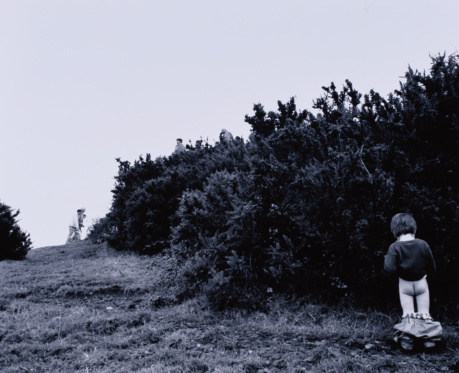If you’re one of the folk who sit on the toilet or stand in front of the urinal, breaking out into a sweat because you swear you can feel they eyes and ears of everyone in the public restroom following your every move, don’t fret – you are certainly not alone. Pee shyness, or paruresis, is actually considered a social disorder- a phobia, technically- in the DSM-5, the definitive diagnostic and classification tool used by practicing psychological professionals in the United States. According to experts, this type of bathroom performance anxiety where a person’s body just won’t cooperate with the owner’s wishes affects at least 21 million people out there, so it’s no wonder that ’90s band Pee Shy chose that (pretty terrible) name to represent their musical efforts; it’s pretty darn relatable!
Most of us have experienced, if only once, at least, that special bit of pressure from hell put on us when 20 people are silently waiting for the one stall that we’re trying to use. Those poor, unfortunate people with paruresis, however, experience this feeling on the regular, and some people suffer from such extreme cases that they feel compelled to avoid social situations if they don’t know what the bathroom situation will be like or if they don’t approve of it.
While the links between anxiety and fear and bladder function are still being investigated, it seems that when people who suffer from paruresis experience a flare-up of anxiety about the social situation they find themselves in, the muscles in their bladder involuntary clamp up, regardless of the conscious efforts the person makes to relax them. This is a particularly uncomfortable sensation when the bladder is full (as most of us who have indulged in one too many Big Gulps can attest to!) These anxieties generally have to do with the fear that other people will overhear while the person conducts their “business,” feeling rushed by others waiting, feeling vulnerable and exposed – the list of situations and anxieties that can trigger an episode of parureris is endless. While most of us usually prefer to have our toilet time private but can deal when we have an audience, so to speak, for people who suffer from clinical pee-shyness, privacy is a vital necessity.
There are some ways to cope with this issue, even if it won’t solve the problem completely. Running water helps a lot of people by masking the sound of urination and taking off some pressure if you can access a sink. If that’s impossible (or if you’re living in LA and appropriately drought-conscious), many people cope with public pee-shyness by plugging their ears while they do the deed. (Throwback to peek-a-boo when you thought no one could see you when you covered your face. So cute.) For people who suffer from chronic and more serious cases, therapy is an option and sometimes even necessary if paruresis begins to negatively affect other aspects of a sufferer’s life.
If only all the people who suffered from paruresis in the world were as charismatic and influential as Oprah. A member of the Pee-Shy Club herself, Oprah felt the pressure in the restroom as the seconds ticked by back in 2004 when she was completing jury duty service. In true diva fashion, she cajoled (but probably commanded) everyone in close proximity into sing “Kumbaya” through the bathroom wall to drown out any potential noise they might have otherwise overheard.
Ah, the pee-styles of the rich and the famous.




-300x169.jpg)












